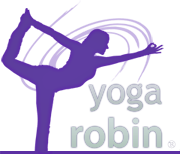Sleep
This is a big factor in Nervous System balance. Lack of sleep wrecks my Nervous System. I’ve noticed that I need less sleep at night since I've done Mysore yoga. Not only do I go to bed earlier and wake earlier, if I wake in the night, I'm alert, and this doesn't disrupt my yoga energy in the morning.
Sleep maintains health
I do take daytime naps sometimes but there is a significant difference between now and pre-Mysore where I needed to sleep a deep 8 hours or else I wasn't as functionable, drank extra coffee, felt fatigue, etc. If I sleep in, skip yoga, thinking that I’m giving myself a needed break, I’m actually more tired during the day, less energetic and feel out of balance on many levels due to no yoga. It’s much better to just go to yoga regardless.
When my Nervous System is balanced, I can see my full potential as a person on many levels. My spirituality is most beaming like a light I cannot put out. All of my confidence to be who I want to be has no barriers.
Ashwagandha Ayurvedic herb
This is my favorite herb, and I take it daily. Its benefits include relief from anxiety, insomnia, backache, menstrual problems and liver problems. I love the immediate calming effect and take it directly after my yoga practice, first thing each morning. My Ayurvedic dosha type is Pitta-Vata, where the Vata needs attention as it gets away from itself, which this herb is known for treating.
Calm vata
"If Vata is disturbed at any karma, there will be severe pain not only at the karma site but in the entire body. Vata symptoms like fear, anxiety, nervous agitation will increase." (Source: Ayurveda and Marma Therapy, Frawley, Ranade & Lele)
I have experienced this karmic “pain” but Mysore yoga has helped me to send it on its way over time.
Valerian Root
This herb calms the Nervous System. It's best to take before bed, for deep sleep (but it’s not a drug). If I take too much, I have a hard time waking up early in the morning though. If taken during the day, I'm tired.
Friends or family
Meeting up with good friends (one at a time to really talk) is calming to the Nervous System. To talk about what really matters is an emotional release that otherwise affects the Nervous System.
Letting a kittie purr on me
My two cats know when I need them. Their instincts send them to lie on me and purr. If I close my eyes and make it a meditation, I feel their healing.
Listen to body's need for balance
Red wine
It calms the Nervous System. It's a sedative so inhibits excitatory nerve cells. It causes an increase in the inhibitory nerve pathway of the brain. Red wine is “neuro protective”. It protects the brain with Resveratrol.
Coffee
Needs to be moderated. I have a little each morning (my ritual) which is warming for Vata and wakes me up for yoga. It's happiness and vibrancy. It activates the sympathetic nervous system if I have a certain amount, which is the opposite of my preferred state of calm.
 Yoga attempts to balance out stress (Image source: yogaforhealthyaging.blogspot.com)Healing the Total Body: Where Western Anatomy Meets Eastern Spiritual Science
Yoga attempts to balance out stress (Image source: yogaforhealthyaging.blogspot.com)Healing the Total Body: Where Western Anatomy Meets Eastern Spiritual Science
 anxiety
anxiety